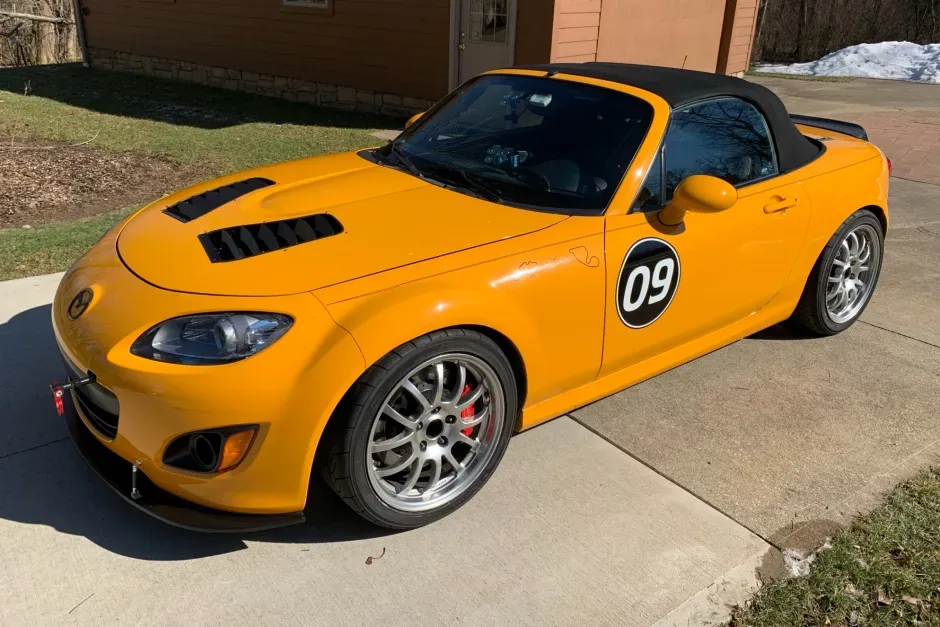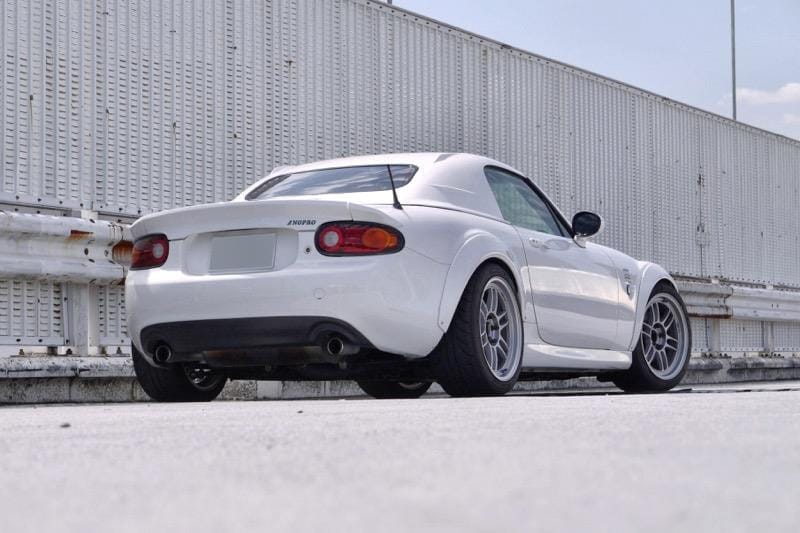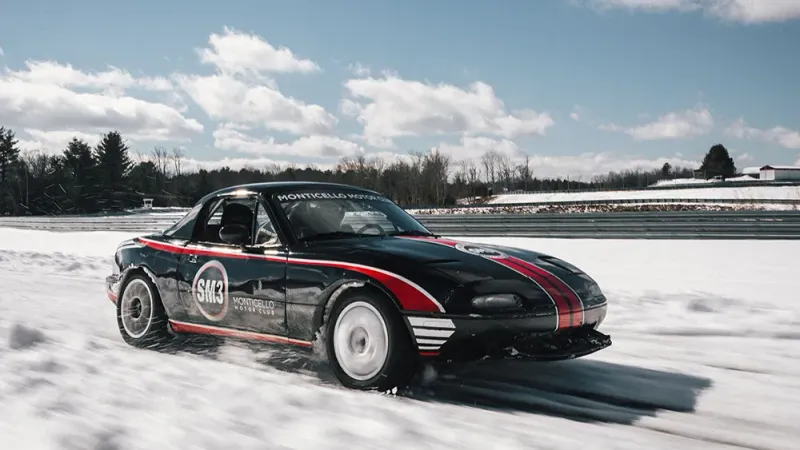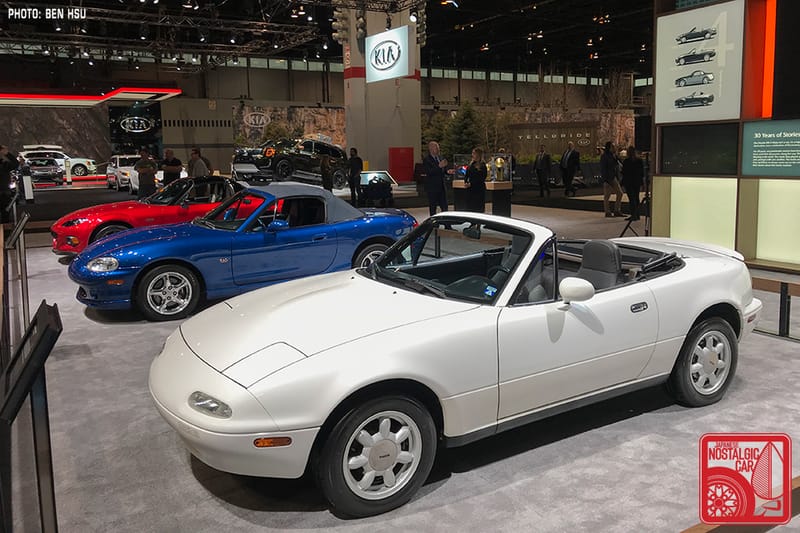Why the NC Miata Is the Best MX-5 to Modify
The third-gen NC strikes the perfect balance for builders—modern enough to handle big power and grip, yet simple enough to wrench on at home. With a proven racing pedigree and a vast aftermarket, it’s the Miata that lets you scale upgrades confidently without every step becoming a science project.

If you want a Miata that takes big grip and real power without turning every upgrade into a science project, the third-gen NC hits the sweet spot. It’s modern enough to scale, simple enough to wrench on, and backed by a deep, race-proven parts ecosystem. Here’s the research-driven case.
A chassis that loves grip
The NC kept a double-wishbone front and switched to a multilink rear, which is exactly what you want as you add tire and aero. That geometry preserves camber and toe control under load, so the car stays planted instead of chewing the outside shoulders. Equally important, the NC accepts genuinely wide wheel/tire packages for its size, think 17×9 wheels with 235–245 section tires once you add proper camber and a touch of fender work. In practice, that means you can run real rubber without sketchy fitment, and the chassis won’t fight you when you add spring rate or downforce.

The “MZR advantage”
All NCs use Mazda’s MZR family. The not-so-secret move is dropping in the 2.5-liter L5-VE from common Mazda and Ford models. Because the architecture matches, the swap is largely bolt-in with a tune and a few MX-5-specific bits. Results vary by dyno, but as a rule of thumb: a stock 2.5 with a good tune and exhaust typically lands around the 170–180 whp neighborhood with a big mid-range torque gain. Add breathing mods (header, intake, cams) and many builds live around 185–200 whp naturally aspirated, while retaining OEM manners. Compared with older NA/NB cars (where displacement costs real money) and the newer ND (where high compression adds complexity), the NC gives you cheap, reliable, “feels like a bigger engine” power.
Street-legal boost is finally easy
For owners in strict-emissions states, the game-changer is the availability of a 50-state, CARB-legal turbo kit for the NC that targets roughly 240 whp while keeping emissions systems intact. If you’re outside those markets, long-running UK/EU programs offer staged packages that scale from the mid-200s to 300+ bhp. The net effect: the NC offers both an easy NA displacement route and a proven, emissions-friendly forced-induction path, rare in the tuner world.

Spec MX-5 (SMX) Supply Chain
Mazda Motorsports built an entire national class around the NC: Spec MX-5. That means standardized, tested parts you can actually buy, control dampers and springs, sway bars, hubs, cooling packages, exhausts, ECU baselines, even a specific tire size (235/40R17). A spec series guarantees continuity and shared setups. When thousands of racers are solving the same problems, you inherit parts availability, durability, and real-world data.
Brakes, cooling, and suspension
Top-tier coilovers exist specifically for NC geometry, Öhlins DFV, KW V3, 949 Racing Xida, along with well-trodden alignment baselines. Braking is covered by lightweight big-brake options from Wilwood, StopTech, and Alcon, with attention to front-rear balance and consumable costs. On the thermal side, factory-style and aftermarket oil-cooler solutions, spec-series radiator/oil-cooler stacks, and differential cooling plates are widely used and track-validated. In short, there are proven parts “stacks” for every pace, from HPDE to enduro.

Tuning and electronics are mature
The MZR platform is heavily supported in motorsport and the aftermarket. The NC benefits from years of practical tuning paths, from reflashes with features like modern phone-based flashing and RaceROM-style maps, to full standalones for all-out builds. There’s no guesswork: tuners have baseline maps and data for 2.5 NA, supercharged, and turbocharged setups.
VS. other generations
Versus NA/NB: The NC brings a stiffer, safer shell, bigger brakes, and an engine family that lets you add displacement without opening the bottom end. Parts support rivals the classics thanks to Spec MX-5 and long-time vendors, so you don’t trade charm for capability.
Versus ND: The ND is lighter and newer, but ECU and compression realities can make big torque more involved. The NC now pairs an easy 2.5 swap with an emissions-legal turbo path, and it packages wide rubber with fewer headaches. If your priorities are budget torque and track-day tire, the NC is the friendlier canvas.
Suggested build paths
Fast-Road / HPDE (2.5 NA, OEM-ish manners)
Drop in a 2.5, add a header/exhaust, and tune it. Pair with Öhlins DFV or Xida “Club,” start from a known street/track alignment, and run quality pads, lines, and fluid. In hot climates or longer sessions, add an oil cooler. Expect roughly 170–190 whp with chunky mid-range and a daily-friendly ride. Consumables stay sane.
Time-Attack / Club-Racing-Lite (2.5 NA with cams, aero, square 245s)
Build the 2.5 with cams, header, intake, and tune. Run 17×9 with 245/40R17s and proper negative camber. Upgrade to a big-brake kit as lap times drop. Use a quality radiator and oil cooler, and consider a diff cooling plate for long stints. Plan on ~185–200 whp NA with reliable 20–30-minute sessions.
Street-Legal Punch (CARB-legal turbo)
Go with the 50-state turbo package targeting about 240 whp. Add coilovers and 235–245 tires, and at minimum upgrade pads, lines, and fluid (a BBK is a nice step). Keep an eye on oil temps and the health of the clutch and diff as torque rises. The result is OEM-like drivability with real shove and clear upgrade paths.
Watch Out for These
Oil temps on track: Once you’re past intermediate pace, or driving in heat, budget an oil cooler. It’s the difference between “fine” laps and consistent, safe ones.
Under-braked on sticky tires: At a minimum, use high-temp pads and fluid, add ducts, and move to a big-brake kit as your pace improves.
Alignment left on the table: The NC responds dramatically to proper camber and toe. Start from established fast-road or track-day baselines; don’t eyeball it.
Diff heat in endurance: A differential cooling plate exists for a reason, use it for long sessions to protect the final drive.
The NC delivers bolt-in displacement, a now-mainstream emissions-legal turbo route, geometry that scales with real tire and aero, and a factory-backed spec ecosystem for parts, setups, and reliability. If your goal is an affordable, scalable, track-capable build that still drives like a Miata on the street, the NC is the sweet spot.




